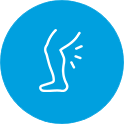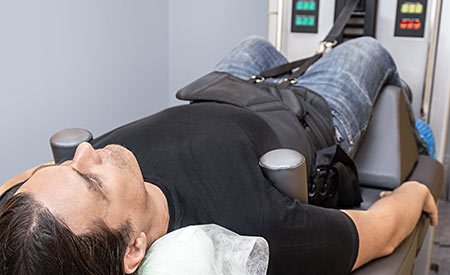Our non-surgical spinal decompression therapy can remove the disruptive back pain you have been feeling and allow you to get back to living your life the way you want. This treatment can help relieve a number of common back issues.

Pain or weakness that extends down the leg

Or other lower back pain

Known as posterior facet syndrome

Injured or diseased spinal nerve roots

Our advanced treatments and technology give us greater insight into your spine than you will find anywhere else. We will move and re-shape your entire spinal structure in order to correct issues that may be causing you pain. We can show you before and after x-rays to verify any changes and progress, and keep working until you find the contentment you seek with your spine.
We can treat any number of issues, including:
There are also a number of specific services and associated benefits of spinal decompression, including:
Mechanical Spinal Decompression is a therapeutic technique often used by providers to create space between vertebrae, stretch muscles and take pressure off nerves and/or the spinal cord. Other terms for spinal decompression are Vertebral Axial Decompression, Spinal Traction or Axial Traction. This technique is non-invasive and generally painless.

that begin at the spinal cord and travel through a small hole (called a foramen) in the side of each vertebra to the rest of the body. The nerves are responsible for detecting changes in temperature and position as well as signaling muscles and producing pain when the nerves are irritated, injured or damaged. Gravity and physical activity can put pressure on our spinal column throughout each day. That pressure “squeezes” out a little bit of fluid from the discs, and the body rehydrates the disc at night when we are at rest. Imagine a kitchen sponge: When it’s wet, the sponge is softer and can absorb some shock. The more we squeeze it, the more water comes out—but when we add water to a dry sponge, it quickly absorbs the water and puffs up. This is similar to the way our discs work.
Spinal decompression affects the discs and nerves in the spine the most. In a healthy spine, the edges of the vertebrae and discs are stacked on top of one another to form a smooth curve, and the nerves between the vertebrae have plenty of space. However, over time or sometimes because of an injury, degeneration or inflammation, the discs can become flatter. This puts pressure on the nerves and can cause pain, weak muscles and/or changes in our sense of touch. In these cases, the discs need a little more room to rehydrate and allow for optimal space for the nerves that exit the spinal cord. Spinal decompression works to create some extra space between each of the vertebrae using gentle traction, which in return helps promote the movement of water, oxygen and nutrient-rich fluids into the discs.